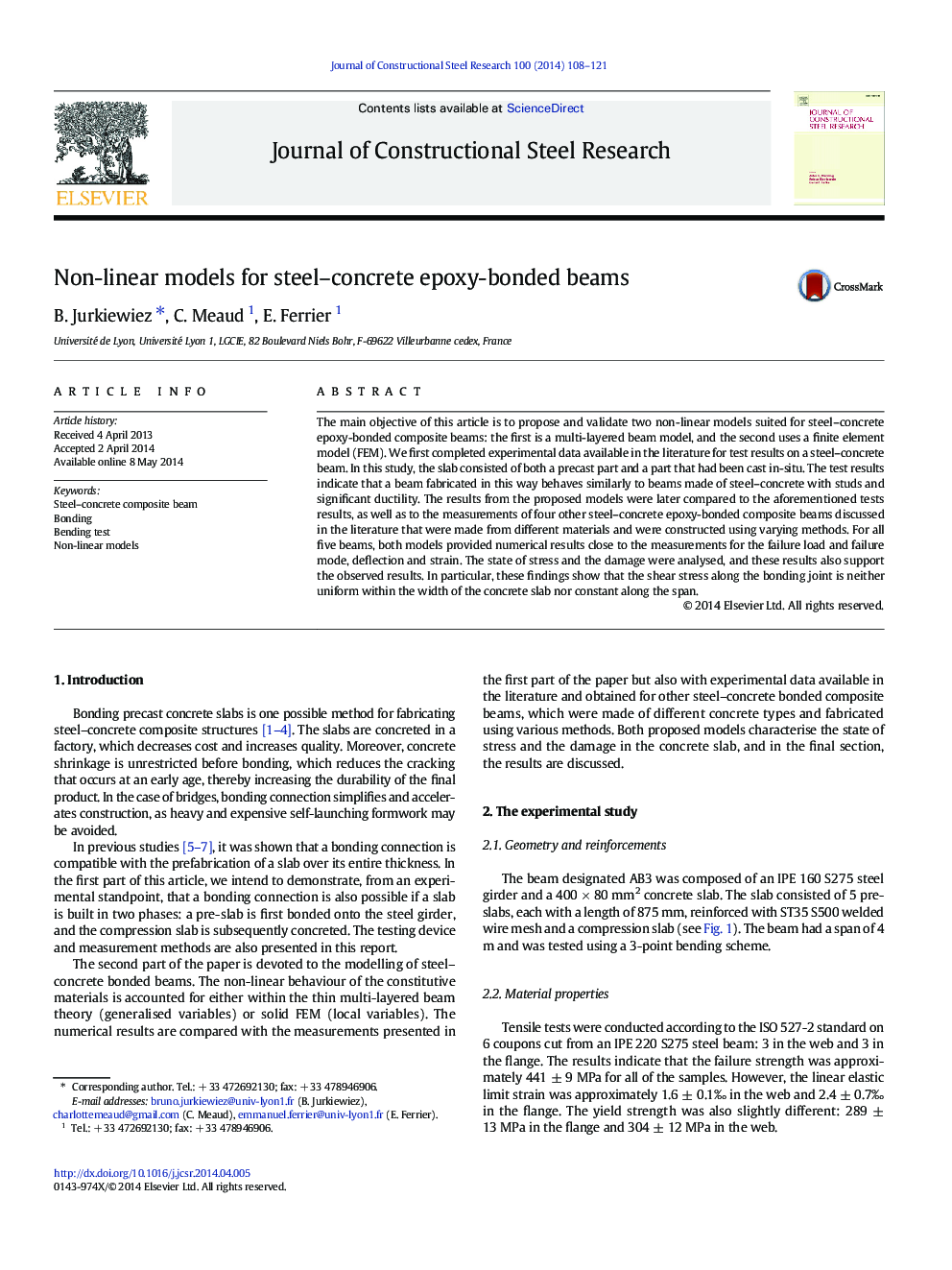| کد مقاله | کد نشریه | سال انتشار | مقاله انگلیسی | نسخه تمام متن |
|---|---|---|---|---|
| 284688 | 509157 | 2014 | 14 صفحه PDF | دانلود رایگان |
• Steel–concrete epoxy-bonded composite beams are studied.
• Effects or geometry, materials or fabrication process are presented.
• Non-linear beam model and FE model are proposed.
• Models are validated by means of tests results.
• Models are used to optimise bonding area.
The main objective of this article is to propose and validate two non-linear models suited for steel–concrete epoxy-bonded composite beams: the first is a multi-layered beam model, and the second uses a finite element model (FEM). We first completed experimental data available in the literature for test results on a steel–concrete beam. In this study, the slab consisted of both a precast part and a part that had been cast in-situ. The test results indicate that a beam fabricated in this way behaves similarly to beams made of steel–concrete with studs and significant ductility. The results from the proposed models were later compared to the aforementioned tests results, as well as to the measurements of four other steel–concrete epoxy-bonded composite beams discussed in the literature that were made from different materials and were constructed using varying methods. For all five beams, both models provided numerical results close to the measurements for the failure load and failure mode, deflection and strain. The state of stress and the damage were analysed, and these results also support the observed results. In particular, these findings show that the shear stress along the bonding joint is neither uniform within the width of the concrete slab nor constant along the span.
Journal: Journal of Constructional Steel Research - Volume 100, September 2014, Pages 108–121
